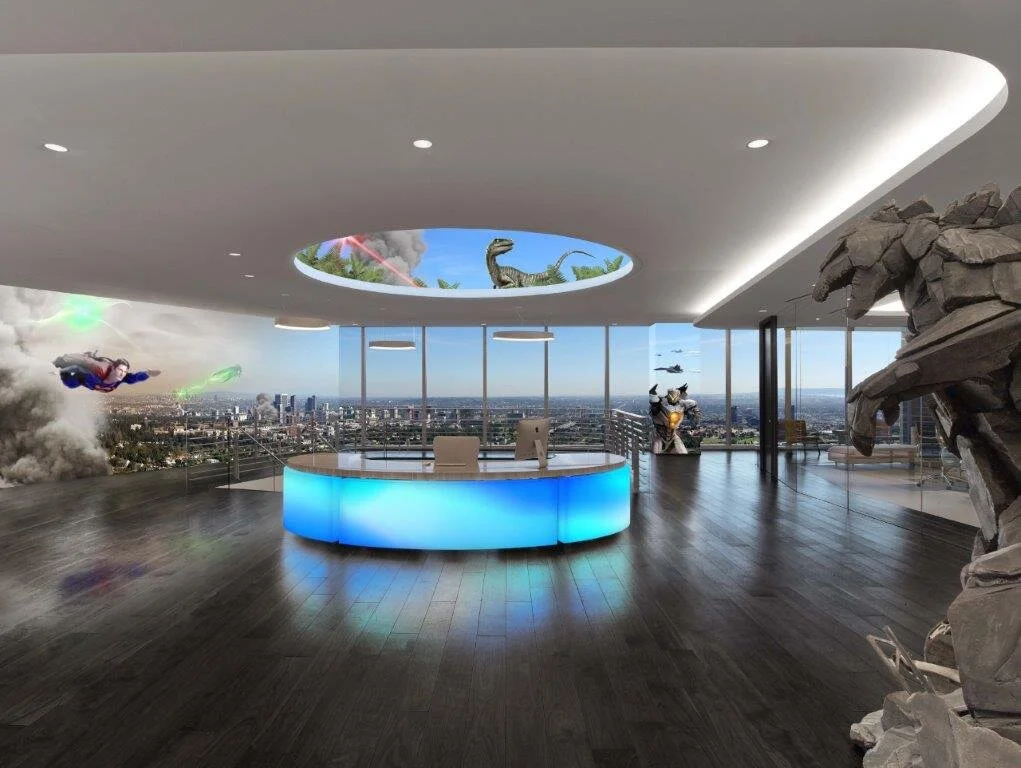Aviron’s common area with a mixture of collaborative and personal spaces. Credit: Eric Laignel
What are experiential graphics?
The Society for Experiential Graphic Design defines experiential graphic design as a process that involves the orchestration of typography, color, imagery, form, technology and, especially, content to create environments that communicate.
In the world of workplace design, there are two options: one that delivers specific information, and one that goes beyond that to deliver an artistic experience that impacts the soul. The informative graphics are similar to those seen in today’s malls, as one example, where consumers engage with touchscreen maps that offer GPS directions to the nearest store of their choice. On the other hand, there is an artistic option that extends into large format installations within a space that visitors can interact with for a more advanced type of extracurricular experience; one that takes the viewer to the next dimension.
Backlit graphics stretch the length of 60 feet to replicate a sense of light and shadow at Aviron. Credit: Eric Laignel
The Power of Experiential Graphics in the Workplace
Whenever taking on a project, opportunities must be evaluated from both ends of the spectrum to determine the most effective, cost-efficient design that will interact with both workers and guests. The budget will affect the amount of technology involved, but it does not necessarily need to limit the extent of the experience itself, given the right artistic vision.
Take a look at the offices at Legendary (above), a global entertainment company, who wanted to create an experience that evoked a sense of the company’s presence in Hollywood. The space has a classic and timeless feel with subtle links to old Hollywood, along with aspects that convey Legendary’s vision of permanence, creativity, and passion.
This was a larger scale account, offering more flexibility to build a brand experience divided into two phases. The initial phase included everything from 3D sculptures of Hollywood characters like Godzilla, custom pinball machines, and a room with comic-book wallpaper. Phase two built on that foundation, incorporating new technology in the reception area, with large-scale motion graphics of iconic Legendary movie scenes to create an altered reality for visitors from the moment they step off the elevators. These scenes are from Legendary’s major Sci-Fi or action movies, which in compound with the 3D sculptures and targeted lighting, offers all who enter the chance to be a part of an exciting adventure; the experience was bigger than reality. Guests recognize the movies, so the visuals trigger the brand awareness while the large-scale production of the graphics made for a movie-like, larger-than-life interaction.



